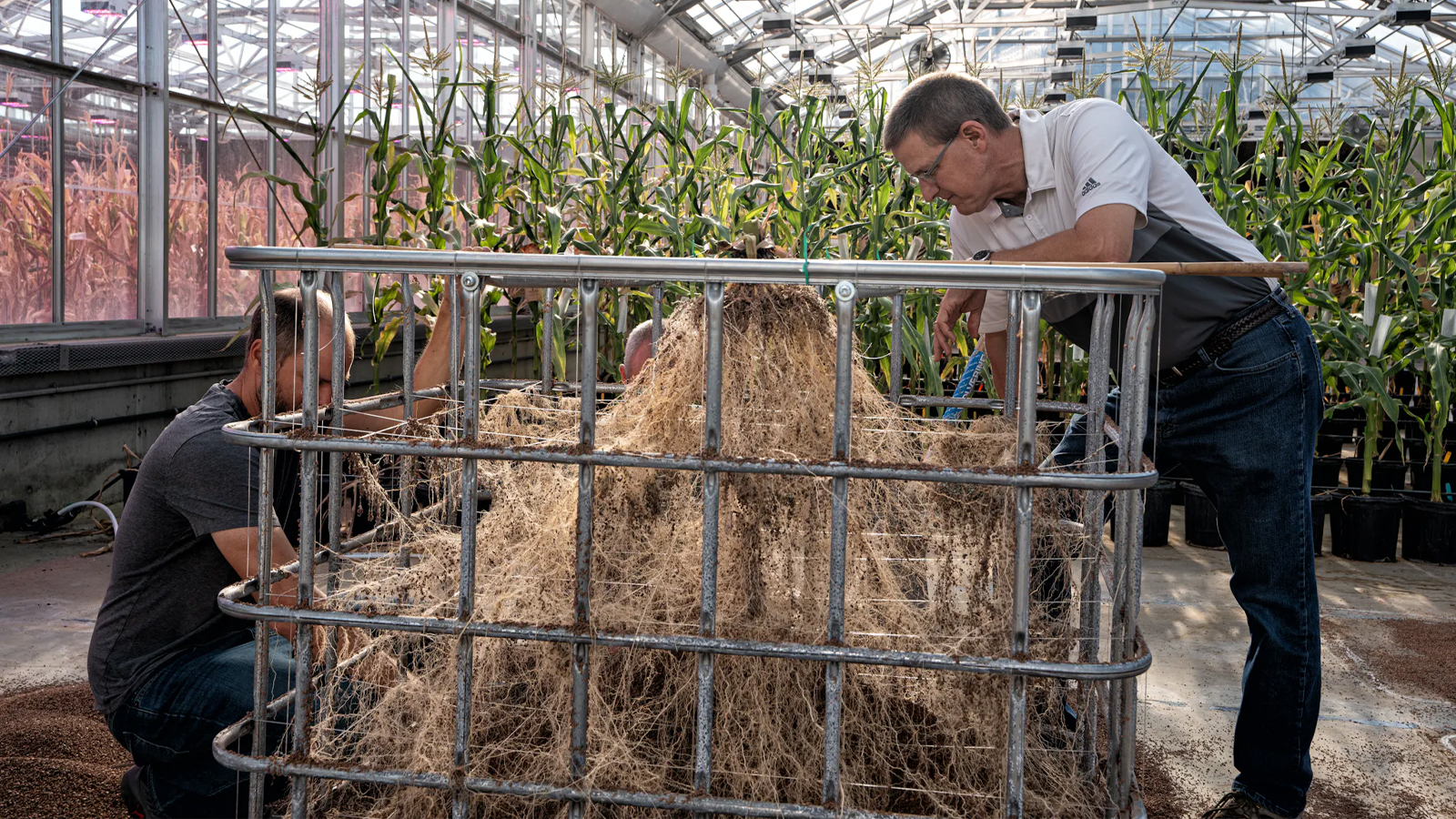Beck’s Root Reveal™ Research Digs Deep Into Understanding Corn Root Architecture

Offering Actionable Insights for Product Placement and Management Strategies
For more than 40 years, the seed industry has described corn products by certain attributes that aid in placement. Beck’s is proud to announce its investment in a uniquely different approach to product research, Root Reveal, to spark a change in the industry standards of how corn products are characterized. The efforts of Beck’s Root Reveal Research will offer farmers more knowledge of hybrid selection, product placement, and crop management by uncovering how the root architecture and root volume of each hybrid impact performance.
“Every industry has a common set of prevailing assumptions. In the seed industry, it’s how corn products are described and recommended,” said Jim Schwartz, director of research, agronomy, and PFR for Beck’s. “We’re digging deeper to provide farmers with more knowledge about the products they’re planting. Our hope is that this research will help us identify correlations leading to causation in relation to root architecture and size and how it impacts variables like nitrogen utilization, population, and stress response.”
Product description looks at static information that describes certain attributes of the hybrid to aid in placement. Beck’s goal is to revolutionize methods of characterization by proactively looking at what influences the hybrid to perform at its highest potential in the soil and environment where it is placed. These insights will provide farmers with unique, hybrid-specific information that will create actionable insights to help them improve their yield potential.
Today, products are recommended to farmers because they are believed to be the best hybrid based on factors such as soil type, placement flexibility, standability, and whether they excel in minimum or no-till scenarios. Beck’s aims to provide farmers with additional data to support whether a hybrid will perform based on root architecture and volume and how those variables affect hybrid performance in various management practices.
Does Root Architecture Matter?
The seed industry has dabbled in understanding different root angles. What it has not done is examine the correlation between root characteristics (specifically structure and volume) and nutrient management and then deliver a recommended product and nutrient plan to customers.
In 2023, with the help of Dr. Fred Below’s team at the University of Illinois at Urbana-Champaign, Beck’s set out to quantify data on root mass, size, and architecture. Beck’s initiated two research projects with the University of Illinois to better understand how hybrid variation in root characteristics is influenced by population and how this variation impacts tolerance to stress and nitrogen uptake.
“We see a shocking amount of rooting variation among commercial hybrids, which seems consistent in ours and Beck’s research,” said Dr. Fred Below. “With our continuing research partnership, we hope to learn how to take advantage of this variation to manage yield-determining variables like nitrogen use or response to population and to allow for more management-specific recommendations to farmers.”
Root Reveal Research
Beck’s Root Reveal Research aims to provide farmers with the best possible recommendations on hybrid selection and crop management. Beck’s team identified a critical component of this research, which is to better understand how the root architecture and root volume of each hybrid in their product lineup impact performance. To do this, Beck’s developed a unique protocol for growing single corn plants in their Corn Root Boxes.
These empty chemical totes were shrink-wrapped, covered with boards, and filled with Turface Athletics™. They were then strung with line to help support and maintain the root architecture of the plant. Each cage contained an individual corn hybrid and was then watered and fed the same amount of nitrogen. Once the plants reached tassel, they were cut off from water and nutrients and left to dry. What were they left with? Incredible visual demonstrations of various root systems’ volume and architecture that will help identify differences farmers may see in product performance relative to root architecture, fertilizer placement, stress tolerance, nitrogen placement, and population management.
Since 2015, Beck’s has evaluated commercial hybrids in low-yielding plots that averaged less than 175 Bu./A. The meta-analysis data shows that of these hybrids, the vertical-rooted products have a +5.4 Bu/A. advantage over the mean of the trials. The eight years of meta-analysis data appears to validate their initial theories around root architecture and their observations of the corn root boxes.
Beck’s robust plans for their Root Reveal Research in 2024 and beyond will help them determine if there is a causational link between root architecture and specific management variables. In addition to evaluating their entire corn lineup through their Corn Root Box protocol, they will continue their on-farm studies through their Practical Farm Research (PFR)® program and in conjunction with the Crop Physiology Laboratory at the University of Illinois and Purdue University.
For more information, please visit beckshybrids.com/research/root-reveal-research.
